The views expressed in our content reflect individual perspectives and do not represent the authoritative views of the Baha'i Faith.
As a visual artist, engaging in discussion and learning about the art world from a Baha’i perspective had long been one of my priorities. In the summer of 2019, I joined seven other participants in an Arts Working Group for a project that opened my eyes to the true meaning of collaboration.
Initially formed in 2018 under the Association for Baha’i Studies, an organization that promotes the study of the Baha’i Faith and its application to humanity’s needs, this Vancouver, Canada-based arts collective was exploring how Baha’i artists fit into the current art world. Many of us in the working group observed that the art world in the West is: a heavily individual, competitive, and materialistic culture where collaborative, service-oriented values do not always seem to align. Through a study of the Baha’i Writings on the arts, contemporary art theories, and other sources, the group examined different conceptions of the purpose of art. It explored how Baha’i artists could contribute to the advancement of discourses in the art world.
The creation of art is a unique way for Baha’i artists to add to the conversation on the arts. When an artist in the group was offered the opportunity to create an art piece for an exhibition for the 200th anniversary of the birth of the Bab — who is the precursor of Baha’u’llah, the founder and prophet of the Baha’i Faith — she invited others to collaborate, resulting in a collective art project.
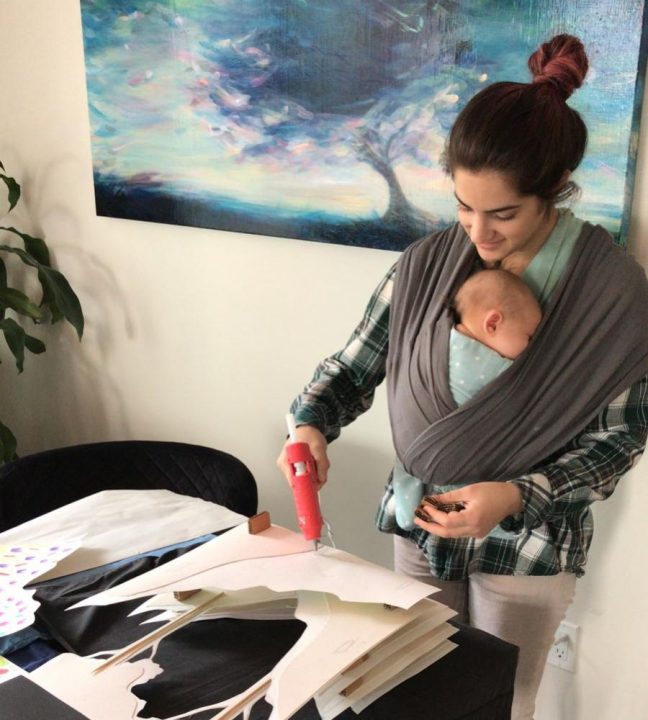
We approached the process of creating art intentionally in a spirit of collaboration. We also wanted to learn about incorporating guidance and inspiration from the teachings and writings of the Baha’i Faith. It was a chance to explore collective creation and the qualities needed to develop collective, non-competitive experiences for artists and practice what we had studied.
In contrast to our experiences with the predominant Western approach to art, which emphasizes the individual, this process merged our identity as artists.
As a result, we chose to focus on ideals such as unity, justice, love, kindness, compassion, and the spirit of collaboration — values actively promoted through the Baha’i teachings:
The supreme need of humanity is cooperation and reciprocity. The stronger the ties of fellowship and solidarity amongst men, the greater will be the power of constructiveness and accomplishment in all the planes of human activity. Without cooperation and reciprocal attitude the individual member of human society remains self-centered, uninspired by altruistic purposes, limited and solitary in development like the animal and plant organisms of the lower kingdoms.
We focused on collective learning rather than a final result. The creation process developed naturally and came together without an agenda, leadership, or ego of any kind. The artwork included each member’s style, and each contributor stepped outside of their creative comfort zone. The presence of a deadline for the exhibition also put pressure on the group members to approach the project with detachment. Often as artists, perfectionism and self-judgment creep into the creative process.

The group decided to create an art piece that would be interactive, contain light, be three-dimensional, and symbolize a gate. The gate refers to the Bab’s position in the Baha’i Faith, which was as a herald who foretold the coming of Baha’u’llah. It also alludes to the wonder of Baha’u’llah’s revelation. We were inspired by stories of the Bab’s life, and by the words of Abdu’l-Baha, the son of Baha’u’llah, who wrote about the Bab’s divine legacy:
The government, the nation, the doctors of divinity and the great personages desired to extinguish His light, but they could not do so. At last His moon arose, His star shone forth, His foundations became firmly established, and His dawning-place became brilliant. He imparted divine education to an unenlightened multitude and produced marvelous results on the thoughts, morals, customs and conditions of the Persians. He announced the glad tidings of the manifestation of the Sun of Bahá to His followers and prepared them to believe.
We also took inspiration from this quote from the book “Divine Philosophy,” where Abdu’l-Baha explains the Bab’s significance. He wrote: “The appearance of the Bab resembles the dawn, for the dawn holds the promise of the sun. The dawn of the Bab promised the rising of the sun of truth that is to envelop the whole world.”
Before creating and discussing the artwork, each creative session began with collective prayer. The piece evolved organically based on the resources, materials, and timeline available for the project. We started in early August and completed the piece in mid-October 2019, just in time to be presented at an exhibition in Richmond, British Columbia commemorating the 200th anniversary of the Bab’s birth. We subsequently exhibited the artwork at other celebrations across British Columbia.
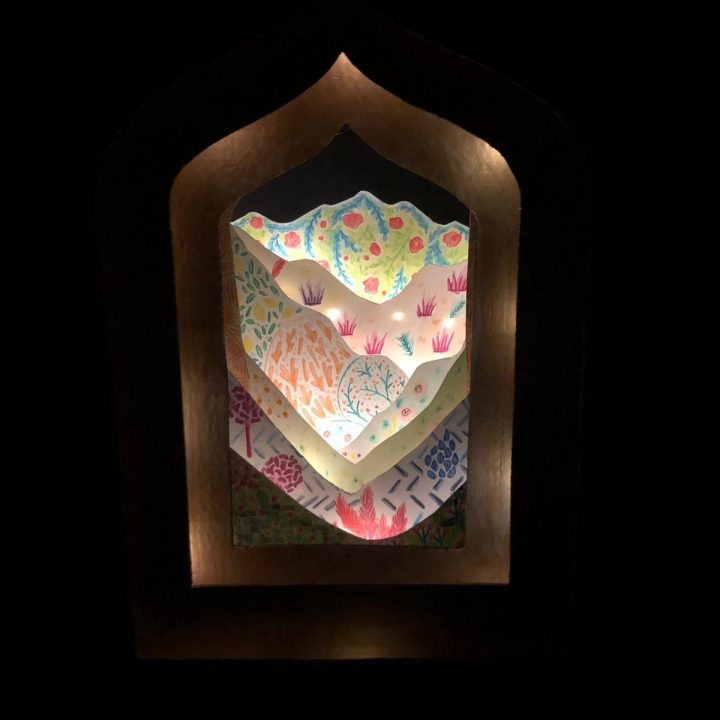
Although it’s been a year since we created this artwork, I still feel immense gratitude for being part of this project. I not only learned new art forms, but I also grew close with the group members. For the first time in a long time, I felt truly proud of a visual art piece I had created. The process has had a lasting effect on my practice as an artist because it challenged my natural tendencies to self-judgment, perfectionism, and the insistent self, which can often take over and corrupt group activities.
Through photos and video of the process and the final piece, you can see how our hard work, prayer, patience, and detachment brought forth a unique art piece. The spirit of collaboration and detachment, and our love for and excitement about the Baha’i holy day, helped us let go of our individual expectations with the artwork and truly be engaged in the process.
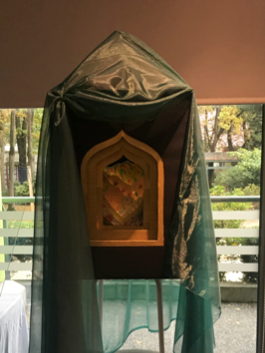
In my career, I have interacted with artists who were well-loved but distant. Their name was their legacy, and their art was about them. This was unlike any of that.
There was no leader in this group — no member delegated tasks to the rest, tried to take credit for the entire project, or undermined anyone. Instead, we learned diverse art styles together. This felt more closely linked to the exercises I had participated in as a young theater student in college.
Following the project, we have continued to work and practice art in our own lives. One artist now incorporates prayer into their process prior to starting an artwork. Another finds that hosting weekly spaces where people can discuss the intersection between art and spirituality nurtures both their soul and their art. Others have lent their design skills to exciting new collaborations.
Through our lives, we hope to carry the spirit of working with others, listening to them, and focusing on art rather than ourselves. We are recognizing that the process of engaging and creating art is not about ourselves but something infinitely bigger. After all, as the Baha’i Writings say, “In this wonderful new age, art is worship.”


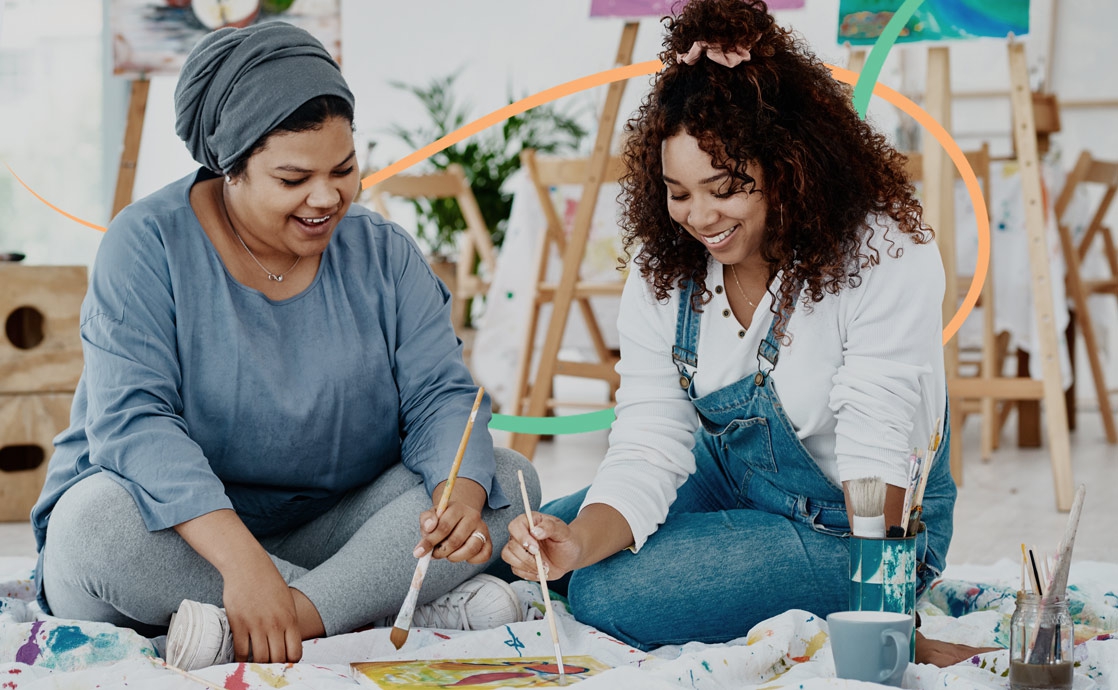



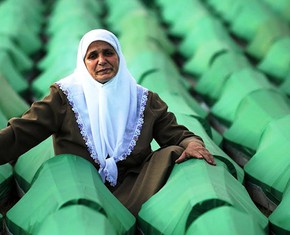









Comments
Sign in or create an account
Continue with Googleor